We don’t learn from our experiences. We learn from reflecting on our experience.
-John Dewey-
Last academic year, I remember one of my colleagues told me that one of the parents mentioned that there was too much reflection in the class. I know that my colleague does reflection regularly to develop reflecting as a habit in the class. Why wasn’t it appreciated? Hmmm… too much? How can reflection be too much? It makes me wonder if the parents do not see the benefits of self-reflection.
Back in April 2018, I shared my thoughts on reflection as a part of the enhanced PYP. What is actually reflection? A skill – A process – A habit – A goal – A concept … or what?
Self-reflection is:
- the ability to think about oneself.
- the ability to stop and think before taking action and responding.
- the ability to think about who they are.
- the ability to think about how they feel.
- the ability to think of what they are good at and why.
- the ability to think of what’s missing and how they can fix/find it.
- … (the list can go on).
Short story … I think self-reflection is basically the ability to think and use this thinking to do something.
Understanding how self-reflection progresses
One can’t walk without learning to crawl. One can’t talk without hearing words. The same thing with being able to reflect. One can’t reflect without knowing what it is and why they need to do it.
Many schools have developed a continuum for the approaches to learning (ATL) skills. This is to help teachers intentionally plan and teach the skills in the class. It ensures learners to develop and master the skills.
I played around using ChatGPT to generate ideas on the development of self-reflection as a skill could look like. It’s just an idea that might help us to create our own. It can also be a starting point when developing the ATL continuum (self-reflection). Let’s say that we can ignore the age and grade level and focus on how it’s actually starting and progressing.

Then, I focus on 1 ‘level‘ of development. Since I teach Grade 1 this academic year, I asked ChatGPT to create the ‘I can’ statements and show me the connection between the development with the IB Learner Profile attributes for grade 1 age. Look how the skill of self-reflection differs from the beginning point (E.g. teacher lead, limited/no self-reflection at all) to mastery.
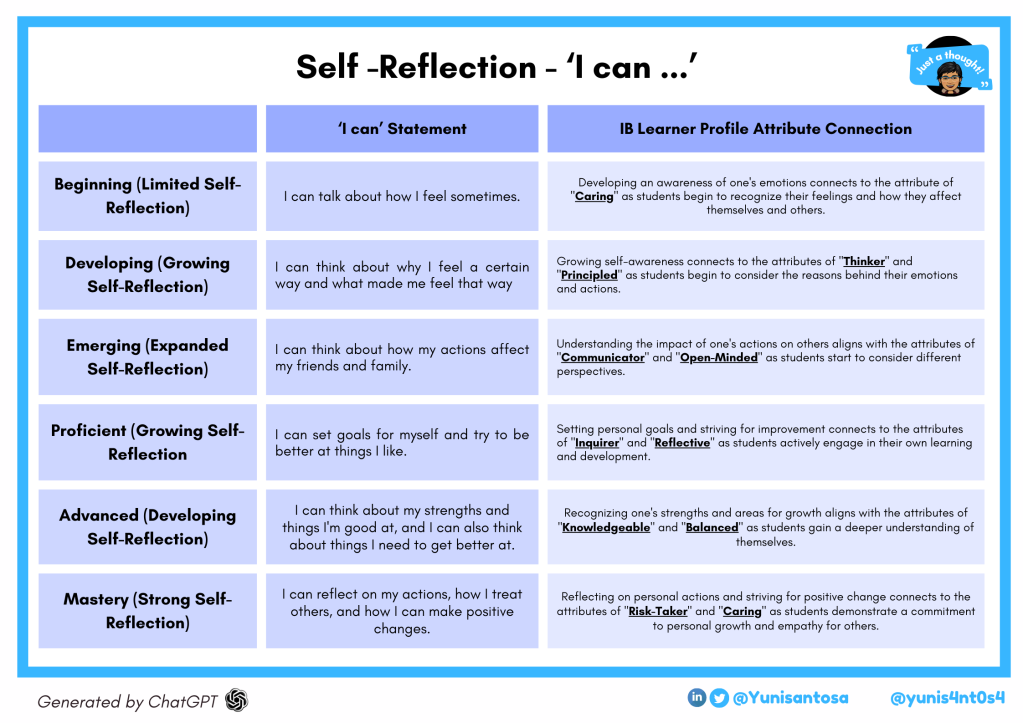
Still focusing on the Grade 1 age level, ChatGPT generated the idea of how self-reflection skills grow using the solo taxonomy structure.
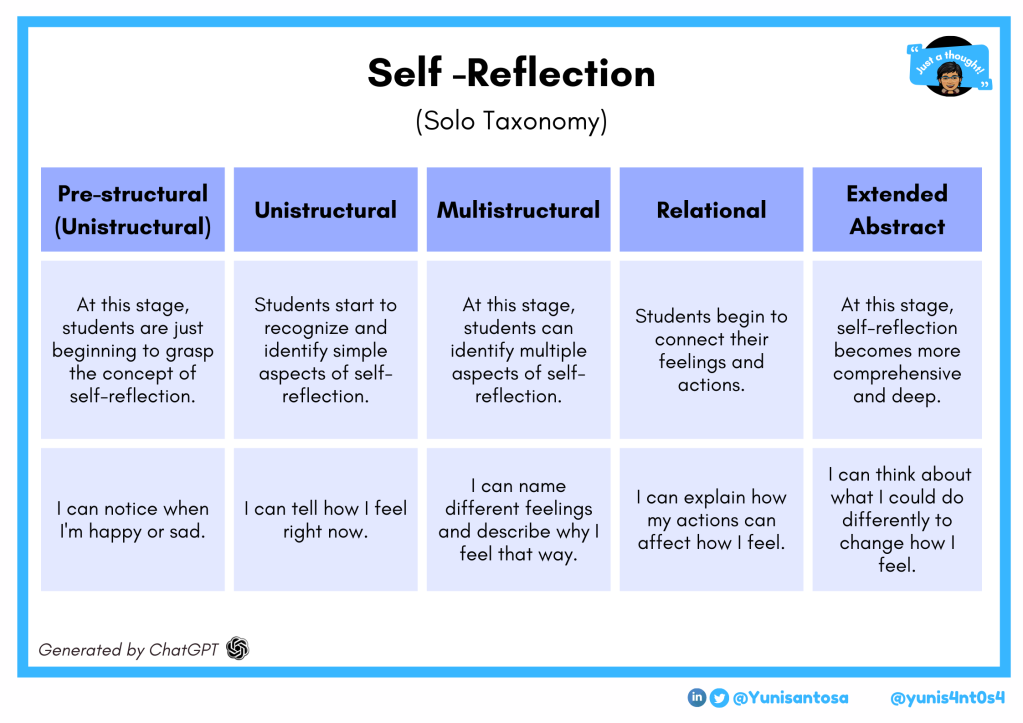
How do we start?
Being able to reflect is essential. It’s a life skill that helps us to grow and glow in our life. As with any other skill we know, it has to be developed. How do we start developing it? Where do we start? How do we teach ‘reflection’?
Often when I facilitate a course, I get asked by teachers, ‘How do I get little kids to reflect? Can they reflect? What if they don’t have the language yet?….‘
Well, as teachers, we can’t expect kids to know how to reflect without being modelled and developed. Reflection requires a high level of thinking skills. So, they need to learn what reflection looks like first and how to reflect. Commonly, kids say, ‘Ooo…I know this. I am good at this.‘ How do you know? What can you show that you know? What made you say that?
Then, they usually answer by saying, ‘Ooo…it’s in my head.’ Well, if you know something, you can explain. If you understand something, you can show it in different ways. Make it visible! Show it! Prove it! Learners who are reflective thinkers and communicators will be able to explain their thinking.
There are some tools/strategies that help and guide learners to reflect. I enjoy using the ‘traffic lights’ visible thinking routine with the lower primary learners. It’s visual. It’s easy to understand and they can relate to the colours easily.
I also like to use the thumbs strategy when I want to gather quick information about how they feel. Of course, it depends on the activity. However, this will need to be supported by the feeling of being safe and comfortable to say what they want to say. We need to consider the learners’ attitudes/personalities when doing this.
I like to adapt the 3-2-1 reflection with the younger learners. 3 words I can explain – 2 pictures I can relate to the topic and 1 question I have in mind. This can be done individually or in pairs – it depends on the purpose of the reflection.
Below are some ideas (how reflections may be done in different subjects) generated by ChatGPT. How can we incorporate the skill into our teaching and learning process? How do we make time for learners to reflect during the lessons?
In addition to the learning experiences that we do in the class (or explicitly plan to focus on reflecting skills), we can use our teacher’s questions to encourage learners to develop and apply their thinking and reflecting skills.
R is for “Remembering,” Think about what you’ve done.
E is for “Examining,” Look at things one by one.
F is for “Feelings,” How do you feel today?
L is for “Learning,” Growing in every way.
E is for “Exploring,” Discovering something new.
C is for “Changing,” Becoming a better you.
T is for “Thinking,” Using your brain each day.
So, “REFLECT” on all you’ve learned, As you grow along the way!
Written by ChatGPT
I am interested in learning how fellow educators develop self-reflection in their daily teaching and learning process. Please share so that we can learn from each other.
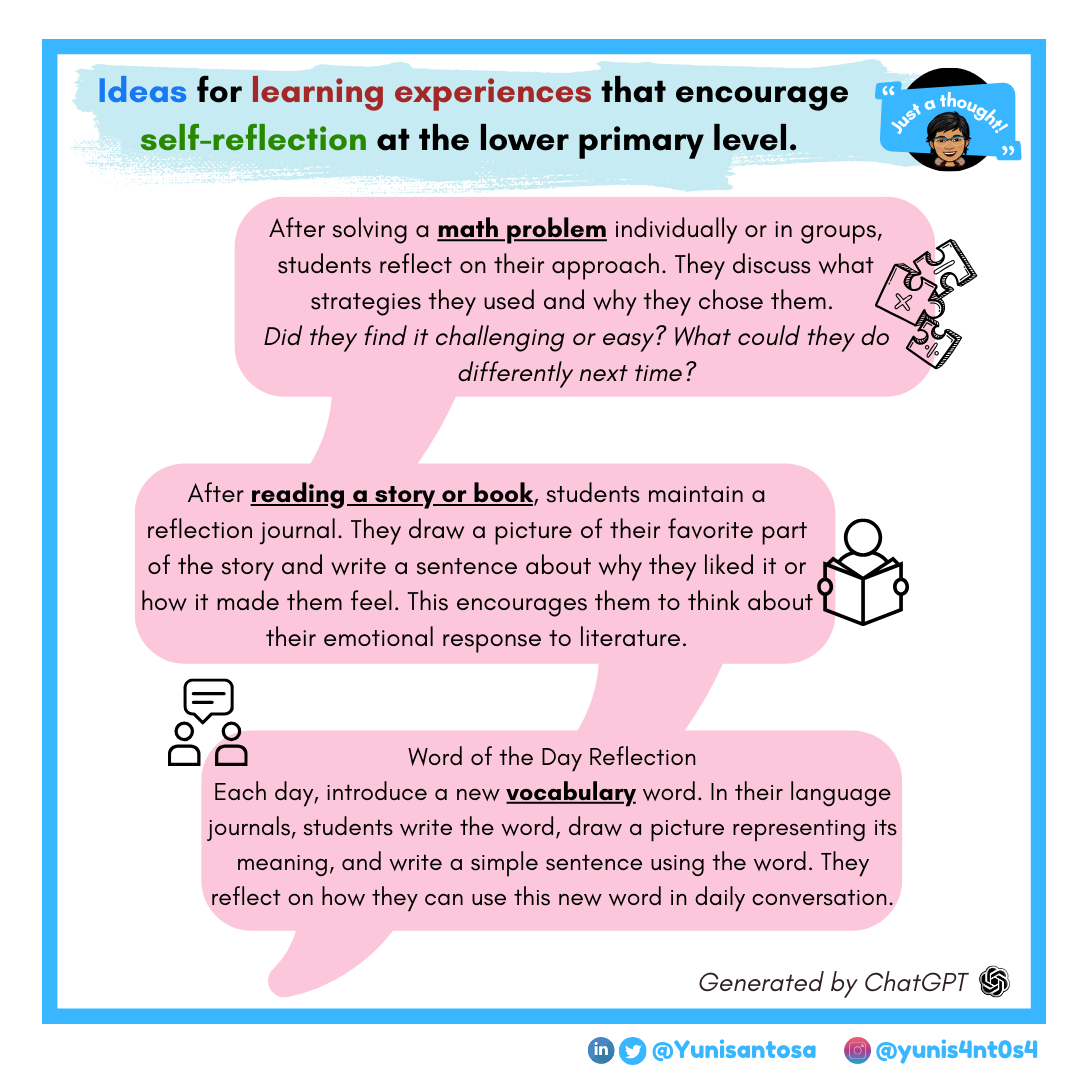
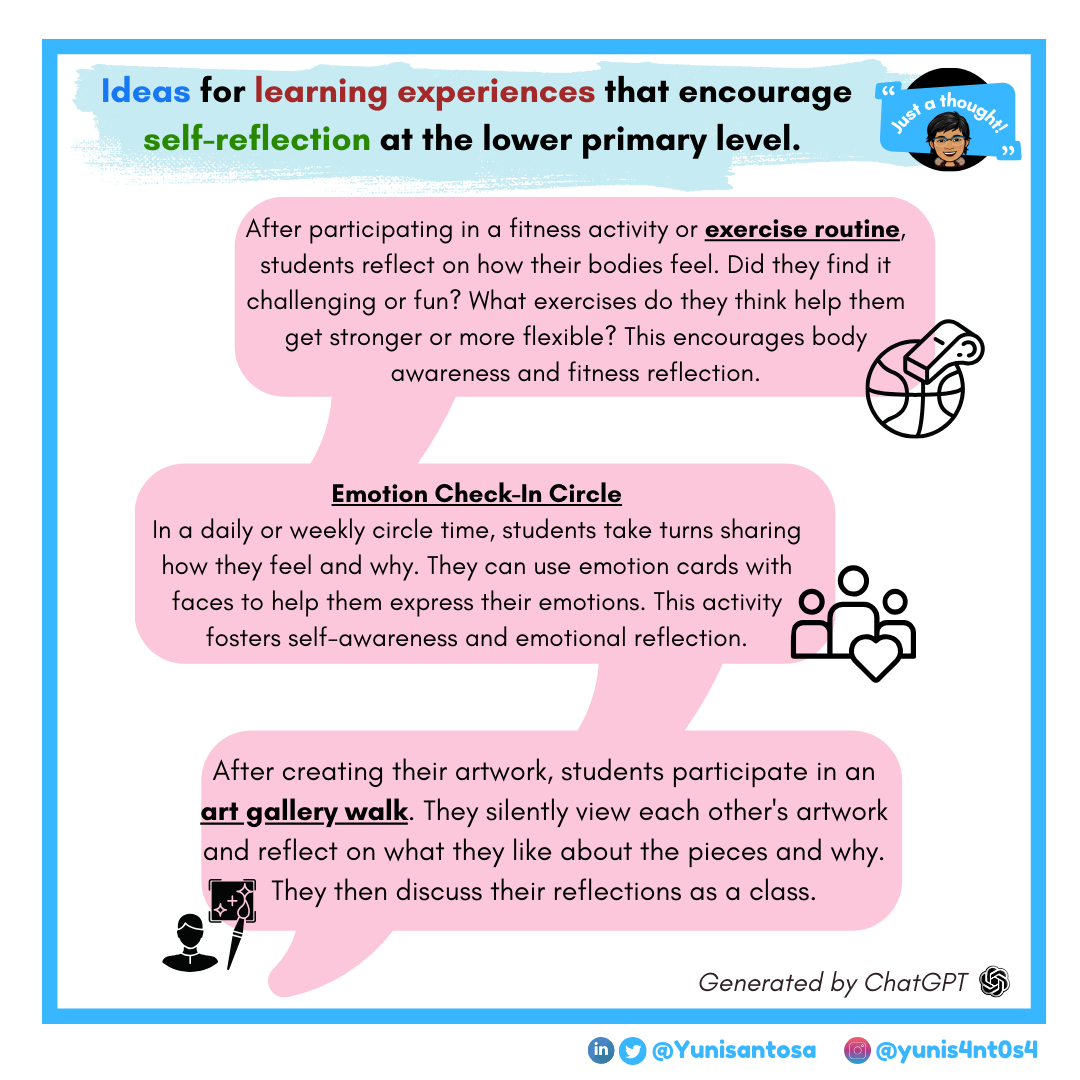
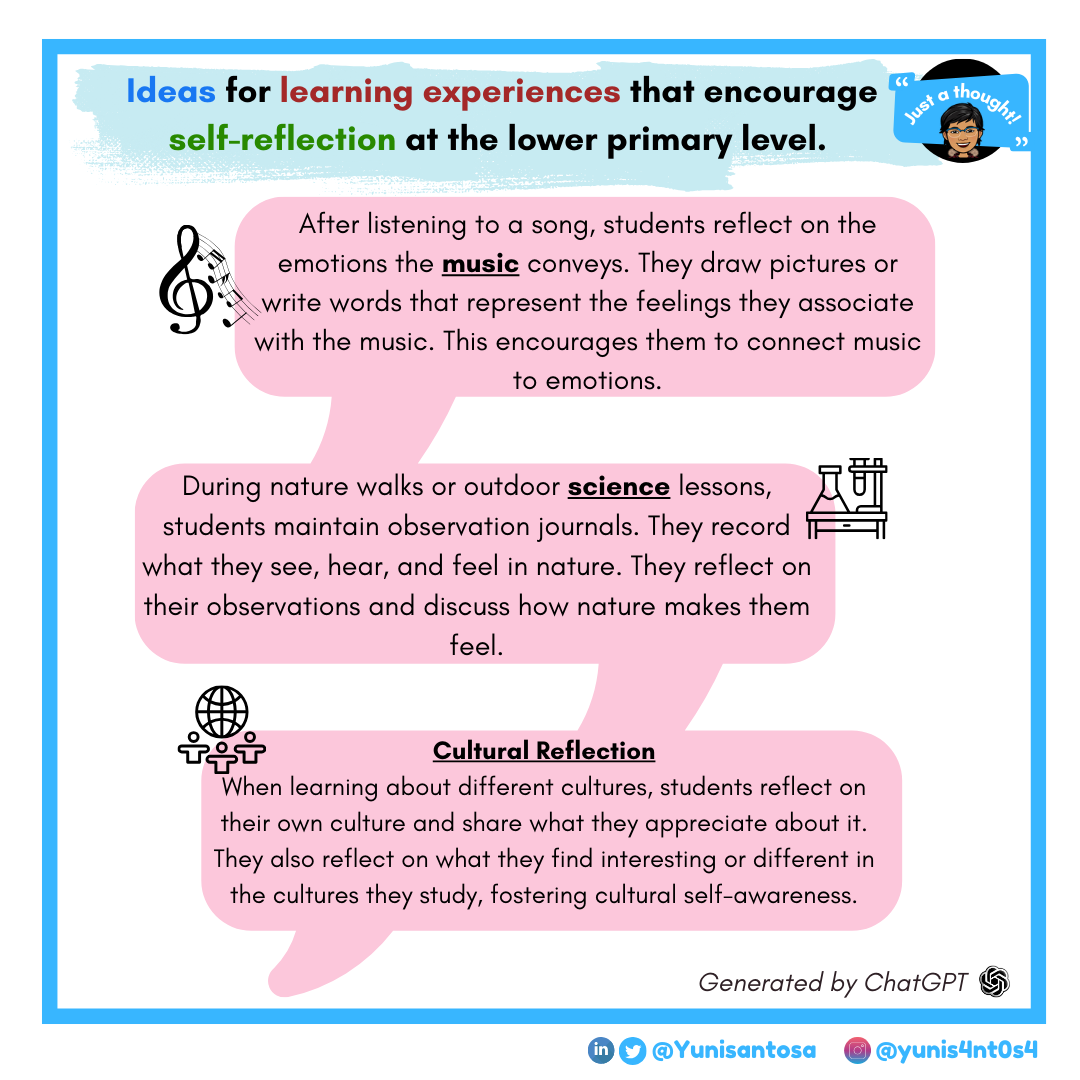
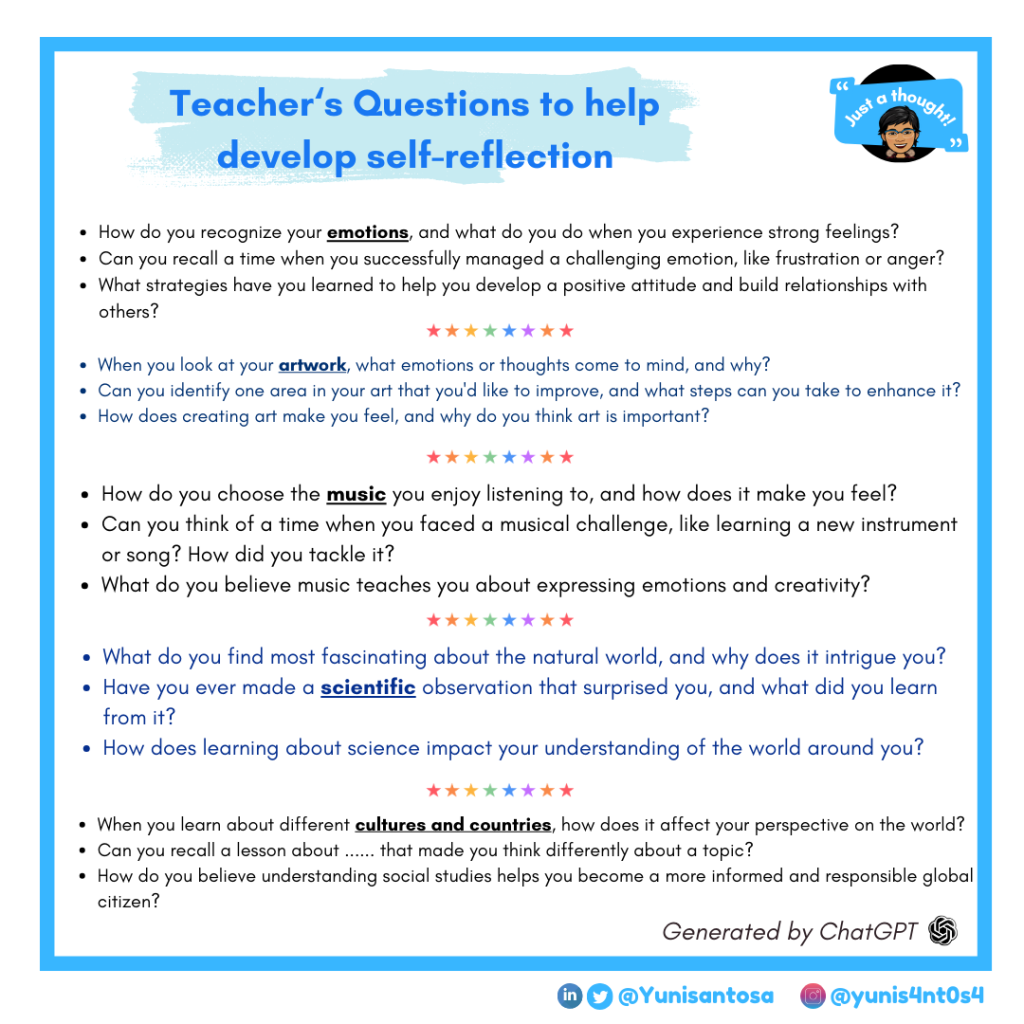
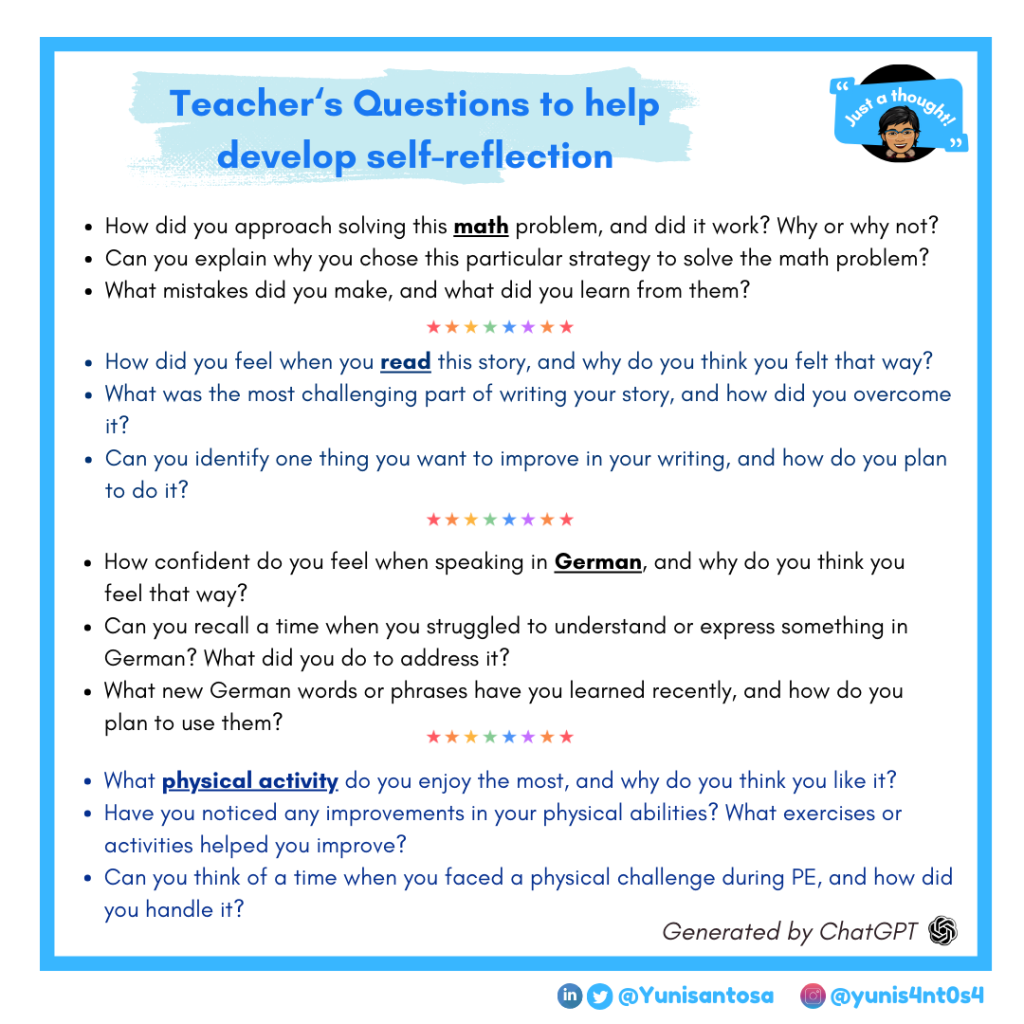

Love this post!
Is it possible to share some of your material? Iâm presenting on Growth Mindset at the Japan Association of Learning Teachers conference in November. Iâm sharing SOLO taxonomy and reflection. Love your ideas!
Kathleen Kampa
>
LikeLike
HI Kathleen,
Thank you. I am glad that the ideas are useful. Please feel free to share.
LikeLike